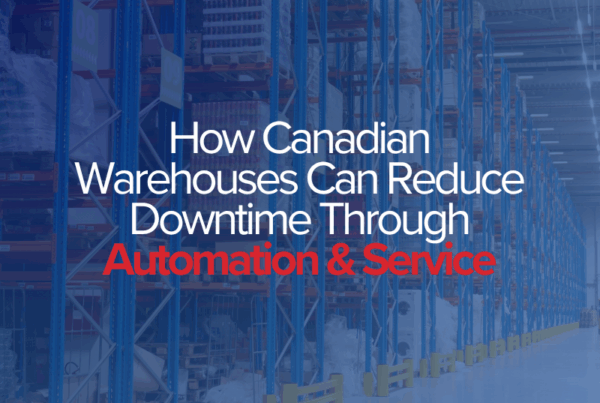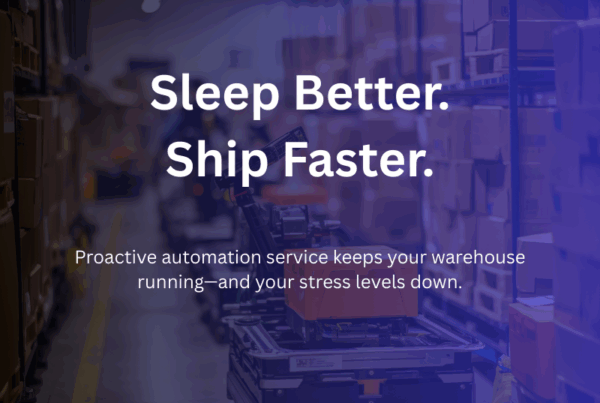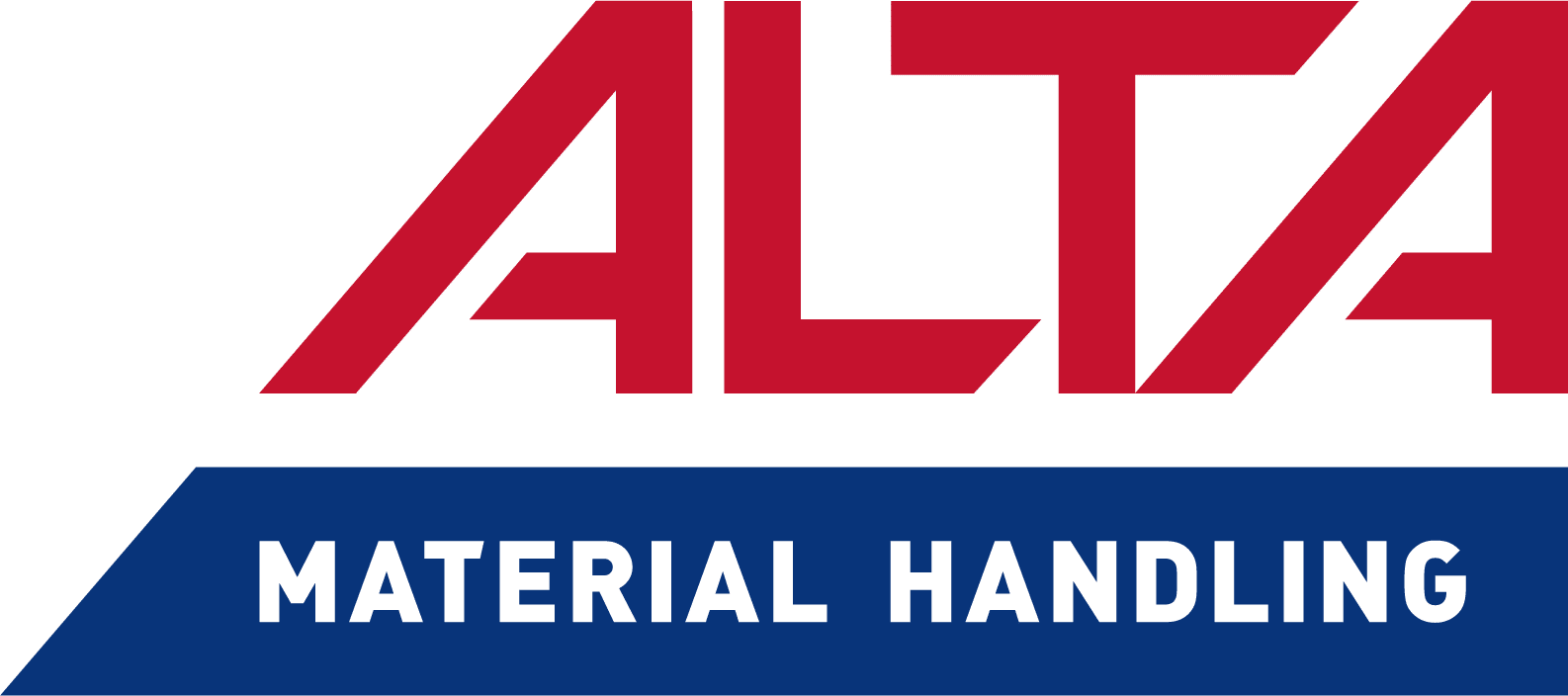Data management systems enable all of the complex parts of a warehouse, distribution center, or manufacturer to work together. As important as they are, they are unseen, and perceived as mysterious forces. To understand them, consider an analogy to an ant colony. Ants all have different jobs – hunting, building, and defending the colony, to name a few. Ants perform their jobs flawlessly and silently, without argument or confusion, communicating through unseen scents called pheromones.
In a distribution center, all of the hardware that makes the operation flow – the forklifts, the conveyors, the sorters and scanners, the scales and label makers – are like ants. Data management systems are the unseen carriers of information that enable all of the hardware to work together, guiding all of the disparate parts toward a common goal.
Founded in 1989, PeakLogix has seen the astronomical changes in the fulfillment industry that started in the 1990’s. The world before Amazon was dominated by two sales channels – retailers and wholesalers – and warehouses and distribution centers dealt in cases and pallets almost exclusively. Prior to that, data management systems were neither needed in distribution operations, nor had developed to the point that they were viable.
In that simpler world, paper picking was efficient enough. SKUs could be stored in fixed locations in simple static racking. Customers had a lower expectation of service, probably because they had limited options. And pre-9/11, warehouse operations weren’t as concerned with tracing the origin of product or the details to where it was being shipped.
In the 1990’s, computing hit a threshold. The internet became a viable source for information and business. At the same time, supply chain software systems became robust enough to handle the many challenges in distribution centers and warehouses. Data capturing and storage became affordable, and programming flexible enough to deal with all of the ins and outs – both figuratively and literally.
Today, many early adopters of supply chain software are facing the problem of obsolescence – their old software and material handling equipment (MHE) are no longer able to keep up with new demands. Over the years, they have spackled solutions onto problems that seemed small enough to deal with, until those many small problems have added up to big inefficiencies.
At the same time, the global, multi-channel economy has driven many young companies through exponential growth. They may see the need to adopt more efficient tools and practices, but haven’t matured into them.
In either case, replacing, upgrading, or adding supply chain software solutions can be done efficiently. At PeakLogix, we know the biggest single reason companies don’t upgrade is their fear of a bad implementation, with hidden costs that push the ROI too far into the future. But our team hasn’t just seen the change in the economy in the past 30 years – we’ve helped many companies successfully steer through it.
Because supply chain software is a necessary component of 21st century order fulfillment, there are many options designed to solve different problems. And it’s becoming increasingly important to operations. The 2021 Warehouse and Distribution Center (DC) Operations Survey reports that more than 80% of respondents are currently using some form of warehouse management system, while 50% intend to upgrade their IT capabilities either to enhance or implement a system to drive productivity.
Deciding which is right for your business requires an honest understanding of your company’s long-term goals and its functional needs, so that they can be matched to the appropriate data management system, and so that the implementation matches the needs, the expectations, and the costs.
Categories of supply chain software systems
Enterprise Resource Planning (ERP) Systems
Enterprise Resource Planning (ERP) systems are designed to streamline the flow of information between an organization’s departments – including management, sales, human resources, order fulfillment, production, and more. Large organizations with many departments that all need access to the same information will likely benefit from an ERP.
Especially as computing power increases, the functionalities of the different data management systems are blurring. ERPs in particular are becoming increasingly good at tasks that were traditionally the domain of WMSs (discussed below), such as product tracking.
Many tech companies offer their version of an ERP system, including big names such as Microsoft, Oracle, and Infor Global Solutions. They sometimes run on different platforms, but their biggest differences are in the kinds and sizes of business they are targeted to serve. Some target large manufacturing industries. Some are designed specifically for smaller companies. Others focus on multi-national corporations.
Warehouse Management System (WMS)
Where an ERP is most concerned with streamlining the flow of information between departments, a warehouse management system’s focus is the storage and flow of inventory. To do this, the WMS is involved in everything from order management to the creation of packing slips and carrier-compliant labels, including put away and replenishment, cross docking, the picking and consolidation of orders, and labor management.
Warehouse management systems track every item as it moves through a distribution center by employing radio frequency ID (RFID) tags, barcoding, smart conveyors, voice- and light-enabled picking, and more, substantially increasing throughput, accuracy, and productivity rates.
WMSs break down into three main categories:
- Standalone Systems – These are focused on what happens to inventory within a warehouse or distribution center. They have limited functionality when it comes to what happens outside the walls of the DC, such as ordering or transportation management.
- ERP Integrated Systems – These systems are part of the broader platform that ERPs provide. While the ERP streamlines the flow of data across departments, the WMS is the component of the ERP that focuses on inventory controls. ERP systems that include a WMS are better at handling exceptions and anomalies such as returns, defectives, and damages than are ERPs without the capabilities of a WMS.
- Supply Chain Integrated Systems – A WMS with supply chain functionality fully integrates information about the supply chain outside the walls of the warehouse into the WMS’s focus on inventory management.
One limitation of a warehouse management system is in the actuation of machines – starters and motors, controlling machine languages, print and apply labeling systems, etc. Those functions are best handled by the systems discussed below.
Warehouse Execution System (WES)
Warehouse execution systems control and synchronize multiple segments of the fulfillment process. They offer some of the inventory control of warehouse management systems – such as basic receiving, shipping, and replenishment; ship and pack sortation management; and pick-to-light, pick-to-voice, and non-automated picking management – while maintaining functional control of individual parts of the system.
A large operation spanning multiple zones might use several different pieces of specialized software, each meant to control conveyors, automated guided vehicles, vertical lift modules, or other specific automated components. The WES can be thought of as the layer above that, uniting the individual pieces into a more seamless operation.
A WES offers some of the management tools of the WMS. Where a WMS prioritizes the work flow by planning and timing the release of orders to be picked, a WES focuses on the execution of tasks performed mainly by automation, but also by operators. Smaller organizations, or organizations with less complicated needs, may only need a WES. However, larger organizations with complex needs will likely benefit from the increased management allowed by a robust WMS.
There are many kinds of warehouse execution system. Providers are able to offer modular software packages, with each component implementing different aspects of a WMS or WCS (discussed below). This allows supply chain managers to incorporate a data management system that is truly customized.
Warehouse Control System (WCS)
Warehouse control systems are the direct controllers of material handling automation such as AS/RS, carousels, conveyors and sorters. Their primary job is to direct the operators and equipment in the order fulfillment process. Equally important, however, is their ability to assimilate into a WES or WMS, for up- and down-stream integration.
Where a WMS is concerned with order creation, inventory control, and shipping, the WCS executes the plans of the WMS by controlling all of the subsystems that get a product from storage to consolidation to shipping.
A WCS works in real time, and is able to determine best-case routing of a product through an ever-changing system. They are responsible for the physical operation of order fulfillment equipment such as scanners, motors, scales, and cameras.
There are many providers of warehouse control systems, each offering a slightly different functionality, user interface, or specialty. Many are flexible enough to handle whatever systems you have – however, finding the one that best matches your needs takes the kind of experience that 30+ years in the industry has given our team at PeakLogix. We will work with you to understand your needs, goals, and processes, and find the best-fit solution.
Conveyor Control System (CCS)
In the by-gone days of the last millennium, conveyor controls – if they were present at all – for the most part consisted of an on-off switch.
In today’s omni-channel, customer-focused world, conveyors have grown more complex. While they are still an energy-efficient means of transporting goods, their responsibilities now include more complex tasks such as timing, sortation, or pallet layering.
The simplest conveyors are still gravity powered – product placed at one end rolls to the other, and no controller is needed. However, from that humble beginning, they range through a vast panorama of complexity.
Simple on-off conveyors still have their place in the world. But as an organization grows, it may need conveyors that, for example, allow for soft or zero-pressure accumulation; or motorized conveyors able to alter their speeds to prevent bottlenecks up or down stream and enable a seamless flow of work; or conveyors capable of sorting boxes, bags, or even bottles.
These systems can be complex enough – and the need for accuracy high enough – that running them efficiently takes specialized controllers.
Seamless, tiered data management: the future of fulfillment
Each of these systems focuses on a different aspect of the fulfillment process, from streamlining communication between departments to controlling the speed of a conveyor.
There are multinational businesses that don’t deal directly with products but need better communications between multiple departments. A business like this could benefit from an ERP without the need of warehouse management software.
At the other end of the spectrum, there are small fulfillment centers that could benefit from a relatively simple WCS to make their processes more efficient.
On which end of the spectrum a business falls depends completely on the needs and processes of that business. At the same time, with the ever-advancing evolution of technology, the lines between these different systems are blurring. There are now warehouse management systems that offer some of the controls of warehouse control systems, and vice versa.
Here’s how the systems crossover:
An operation considering its goals might decide to invest in a warehouse control system that is capable of later adding the management of a warehouse execution system, and can later still be folded into a warehouse management system.
In our decades of experience, we’ve seen that there is no one-size-fits-all solution. We have found the best approach is to work as a team with our partners to discover their needs and to help them explore the many options available. Once a solution is decided upon, our team gets to work finding the least intrusive, most cost-effective implementation.






